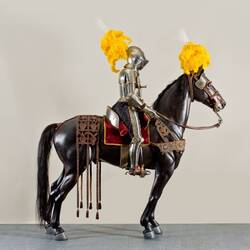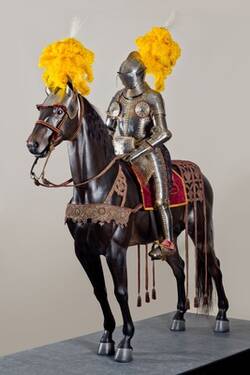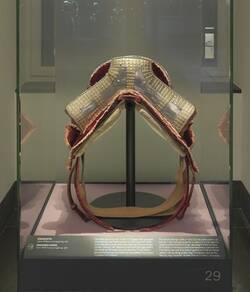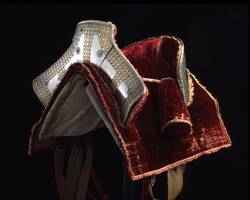“If . . . the fall occurs without injury, the rider is helped back onto his mount and the joust is repeated several times. In one tournament, for instance, there were five jousts of war, in which both horsemen fell twice. On another occasion, at a tournament between Duke August of Saxony and Otto von Ebeleben, which took place in Weißenfels in 1551 and which came to nothing because of the horses, the contestants continued on foot and Ebeleben was brought to his knees.”
This armour with its gilded “waffle pattern” ornamentation marked the beginning of a long relationship between the commissioning Court of Saxony and the Augsburg armourer Anton Peffenhauser. It was ordered by Elector August in 1582, but to judge by its slim, delicate shape, does not appear to have been for his own use, but for that of his twenty-two-year-old son, Christian. August’s present cost 200 talers, but it seems to have been worth it. Christian was delighted with it and, much to his father’s satisfaction, greatly enjoyed competing in tournaments. During his own short reign of just five years, Christian I ordered several more armours from Peffenhauser in Augsburg.
Before the Elector commissioned this suit of armour, Peffenhauser sent him part of the helmet visor as a sample. Then two saddles were made and numerous interchangeable parts – so that the armour could be used for tilting and at free tourneys, as well as at foot-tourneys. Particularly striking is the symmetrical “waffle pattern” all over the armour. It consists of embossed rectangles on an etched and gilded background decorated with a fine foliage pattern. The discs with spikes mounted to the right and left of the breastplate are known as “floating plates”. They served to protect the armpits by warding off the opponent’s lance during the various different kinds of jousts.



